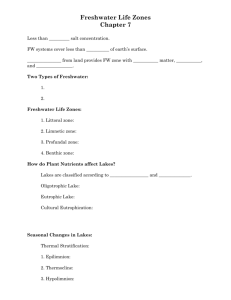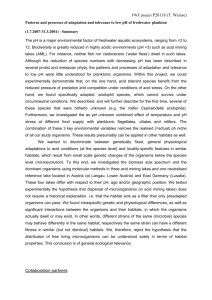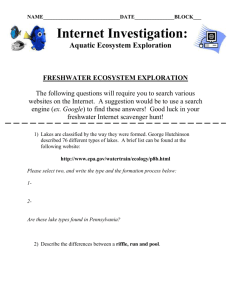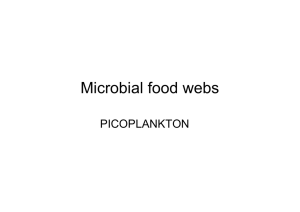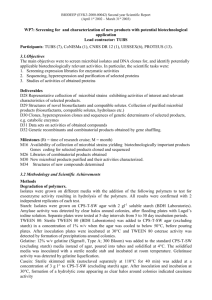Summary
advertisement
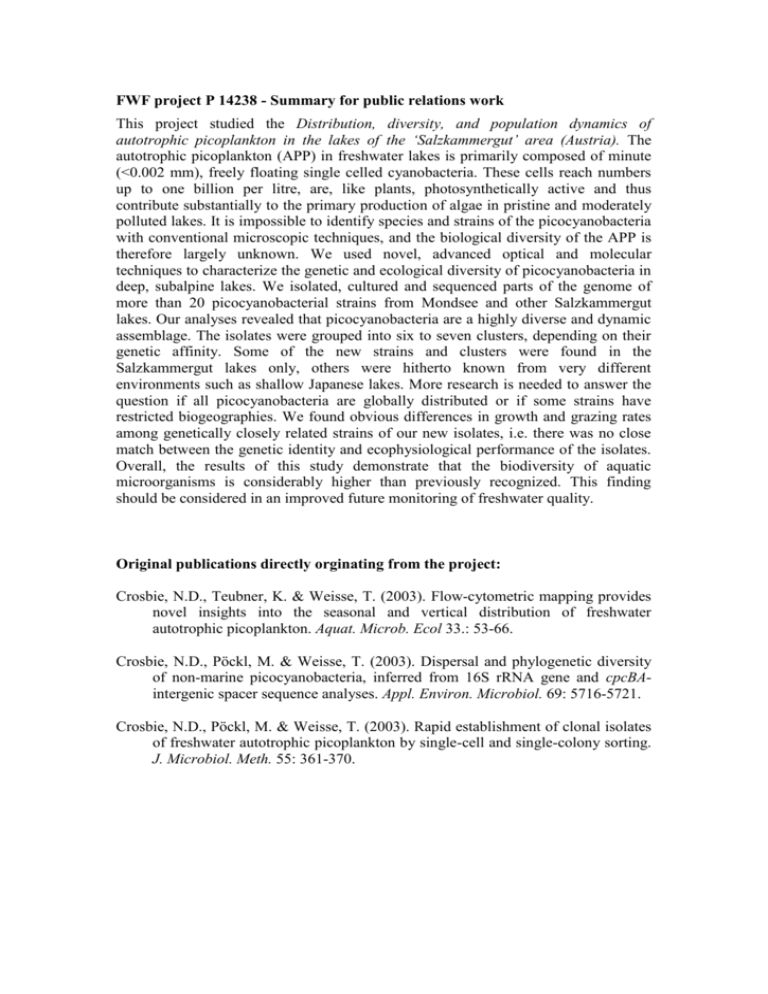
FWF project P 14238 - Summary for public relations work This project studied the Distribution, diversity, and population dynamics of autotrophic picoplankton in the lakes of the ‘Salzkammergut’ area (Austria). The autotrophic picoplankton (APP) in freshwater lakes is primarily composed of minute (<0.002 mm), freely floating single celled cyanobacteria. These cells reach numbers up to one billion per litre, are, like plants, photosynthetically active and thus contribute substantially to the primary production of algae in pristine and moderately polluted lakes. It is impossible to identify species and strains of the picocyanobacteria with conventional microscopic techniques, and the biological diversity of the APP is therefore largely unknown. We used novel, advanced optical and molecular techniques to characterize the genetic and ecological diversity of picocyanobacteria in deep, subalpine lakes. We isolated, cultured and sequenced parts of the genome of more than 20 picocyanobacterial strains from Mondsee and other Salzkammergut lakes. Our analyses revealed that picocyanobacteria are a highly diverse and dynamic assemblage. The isolates were grouped into six to seven clusters, depending on their genetic affinity. Some of the new strains and clusters were found in the Salzkammergut lakes only, others were hitherto known from very different environments such as shallow Japanese lakes. More research is needed to answer the question if all picocyanobacteria are globally distributed or if some strains have restricted biogeographies. We found obvious differences in growth and grazing rates among genetically closely related strains of our new isolates, i.e. there was no close match between the genetic identity and ecophysiological performance of the isolates. Overall, the results of this study demonstrate that the biodiversity of aquatic microorganisms is considerably higher than previously recognized. This finding should be considered in an improved future monitoring of freshwater quality. Original publications directly orginating from the project: Crosbie, N.D., Teubner, K. & Weisse, T. (2003). Flow-cytometric mapping provides novel insights into the seasonal and vertical distribution of freshwater autotrophic picoplankton. Aquat. Microb. Ecol 33.: 53-66. Crosbie, N.D., Pöckl, M. & Weisse, T. (2003). Dispersal and phylogenetic diversity of non-marine picocyanobacteria, inferred from 16S rRNA gene and cpcBAintergenic spacer sequence analyses. Appl. Environ. Microbiol. 69: 5716-5721. Crosbie, N.D., Pöckl, M. & Weisse, T. (2003). Rapid establishment of clonal isolates of freshwater autotrophic picoplankton by single-cell and single-colony sorting. J. Microbiol. Meth. 55: 361-370.




